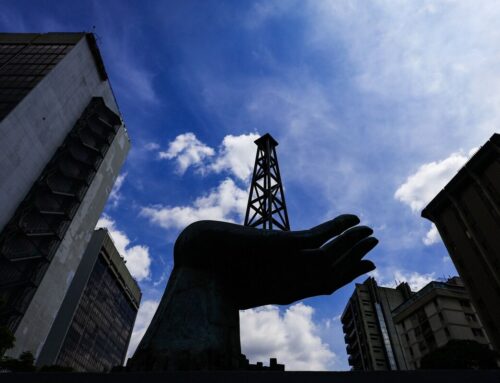A new Mr. Trash Wheel? City wastewater settlement funds environmental projects
April 15, 2025
Could any good come from the recent disastrous lapses at Baltimore’s two wastewater treatment plants? City and state leaders think so.
Officials announced Tuesday that Back River in Baltimore County, impaired by pollution from the city’s largest wastewater plant there, will become home to a new member in the family of googly-eyed trash wheels famous for collecting litter in the harbor.
The trash wheel is one of nearly two dozen projects set to receive money through a $1.7 million settlement fund, which Baltimore officials agreed to finance as part of a consent decree with the Maryland Department of the Environment over pollution violations at its wastewater plants.
Other grants will help fund community cleanups, water quality testing, stormwater infrastructure and other environmental work in the Baltimore area.
The Baltimore Banner thanks its sponsors. Become one.
The city of Baltimore agreed in late 2023 to pay $4.75 million in fines. A separate portion of that fine, $1.43 million, goes directly to MDE, while the city will only have to pay a final $1.43 million cut if it violates the consent decree.
Administered by the nonprofit Chesapeake Bay Trust, the Healthy Environment, Healthy Communities Grant Program will fund 21 community-led environmental projects in its first year, Baltimore and Maryland officials announced Tuesday. Groups and communities applied to the Chesapeake Bay Trust for funding, and awards range from a couple thousand to hundreds of thousands of dollars.
The largest, at $655,000, will fund the new trash wheel, to be managed by the Back River Restoration Committee.
Other grants include $44,000 for One More One Less Mentoring, for environmental education programs and strategies to manage invasive blue catfish; $158,000 to GeN’xt Ministries for stormwater management work at a Northeast Baltimore church; and $223,000 for Living Classrooms Foundation to improve water in Baltimore’s Lancaster Street Canal through greening work.
The environmental group Blue Water Baltimore will receive two grants for water quality sampling.
The Baltimore Banner thanks its sponsors. Become one.
Gathered at Cox’s Point Park along the Back River in Baltimore County, officials with the city, MDE and the Chesapeake Bay Trust on Tuesday touted major strides at the wastewater plant across the water and a second treatment facility in Wagner’s Point.
Both plants today are in compliance with their environmental permits — a different picture from the way things looked at their low point a few years ago, when they were dumping partially treated sewage into tributaries of the Chesapeake Bay.
State regulators tasked Maryland Environmental Service, a nonprofit business unit of the state, with taking over the 114-year-old Back River plant in March of 2022. Damning reports warned of potential catastrophe and “failures at nearly every level,” including the depletion of half its operating staff. Remaining staff frequently worked multiple shifts, yet full coverage was “nearly impossible,” one report said.
Since then, Maryland Environmental Service has left Back River. And, an agreement with state regulators and environmental advocates — who filed federal and state lawsuits in 2021 and 2022 seeking a court order to fix the plants — requires the plants to replace and repair necessary equipment, submit quarterly progress reports and hold annual progress meetings.
Now, outflows of two nutrients that contribute to the Chesapeake Bay’s ailing health are down substantially.Since 2022, nitrogen pollution has dropped 60% at Back River and 78% at the Patapsco Wastewater Treatment Plant, while both have seen phosphorus pollution decrease by more than 80%, state officials said Tuesday.
The Baltimore Banner thanks its sponsors. Become one.
Still, improvement has come at a cost. Baltimore has turned to pricey contractors to do jobs once handled by its own employees, outsourcing that is partly responsible for residents’ increased wastewater fees.
“We’re excited to be where we are today, but we have a long way to go,” Mayor Brandon Scott said. “This is not us celebrating. This is us acknowledging the great progress has been made.”

Back River’s new trash wheel will join a family — perhaps as a distant cousin? — of four beloved wheels helping to clean up Baltimore’s harbor: The original Mr. Trash Wheel in the Inner Harbor, Professor Trash Wheel near Canton, Captain Trash Wheel in Masonville Cove and Gwynnda the Goodwheel of the West, in Gwynn’s Falls.
Officials are still working on a name for the newest addition.
One thing’s for sure, said Baltimore County Executive Kathy Klausmeier: This one should be a “Ms.” Trash Wheel.
Search
RECENT PRESS RELEASES
Related Post

